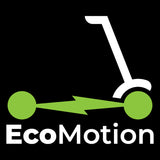How to Ride Safely on an Electric Scooter: A Comprehensive Guide
Electric scooters offer a convenient, eco-friendly, and fun way to travel, whether you're commuting to work, running errands, or enjoying a leisurely ride. However, safety should always be a top priority when riding an electric scooter. With their increasing popularity, it’s essential to understand how to ride safely to protect yourself and others around you. This guide covers crucial safety tips, the importance of safety gear, proper riding techniques, and the role of visibility and lighting in staying safe on the road.
1. The Importance of Safety Equipment
Wearing the right safety gear is the first step to safe riding. Even if you're riding in familiar areas or at slower speeds, accidents can happen, and being prepared can make all the difference. As they say, "dress for the slide, not the ride".
a. Helmets: Your First Line of Defence
-
Why Wear a Helmet? Helmets are not only compulsory throughout Australia, they are essential for protecting your head in case of a fall or collision. Head injuries can be life-threatening, and a quality helmet can significantly reduce the risk of serious injury.
-
Choosing the Right Helmet: Look for a helmet that meets Australian safety standards. The helmet should fit snugly but comfortably, with no movement when you shake your head.
-
Full-Face Helmets: For added protection, especially at higher speeds or on busy roads, consider a full-face helmet. If you fall off your scooter, you are most likely to fall forward. Full-face helmets offer additional protection for the face and chin, providing more comprehensive protection against impacts and debris.
b. Gloves: Protecting Your Hands
-
Why Wear Gloves? In the event of a fall, your hands are often the first point of contact with the ground. Gloves protect your hands from scrapes, cuts, and bruises, and they also improve your grip on the handlebars.
-
Choosing the Right Gloves: Opt for gloves with good padding and grip. They should be comfortable and fit well, allowing for full finger movement and control.
c. Knee and Elbow Pads: Extra Protection
-
Why Wear Pads? Just like gloves, knee and elbow pads protect against abrasions and impacts during falls. They are especially important for beginners, older riders or when riding on rough or unfamiliar terrain.
-
Choosing the Right Pads: Look for pads that are lightweight, breathable, and adjustable. They should stay securely in place without restricting movement.
d. Correct Footwear
- Always wear closed-toe shoes, and consider wearing boots which provide some ankle protection. NEVER wear thongs or sandals or bare feet.
2. Proper Riding Stance and Technique
Maintaining the correct riding stance and using proper riding techniques are vital for control, balance, and overall safety.
a. Riding Stance: Stay Balanced and Stable
-
Feet Position: Place one foot on the scooter deck near the front and the other foot towards the rear of the deck, at least shoulder-width apart. This stance helps maintain balance and provides better control over the scooter. Do NOT stand with your feet side-by-side or with your feet too close together as this provides a smaller support base and reduces your ability to maintain control and balance in the event that you need to suddenly stop or change direction.
-
Knees Slightly Bent: Keep your knees slightly bent to absorb shocks and maintain balance. This stance also helps in maneuvering and reacting quickly to obstacles or sudden changes in terrain.
-
Hands on Handlebars: Always keep both hands on the handlebars. This ensures you can respond quickly to steering changes and maintain control over the scooter.
-
Body Posture: Lean slightly forward with a relaxed upper body. Avoid leaning too far back or slouching, as this can throw off your balance and make it harder to control the scooter.
-
Don't lean on the handlebars: Do not put your weight onto the handlebars while riding. Not only does this place unnecessary stress on your electric scooter's stem and folding mechanism, it makes it more difficult to control. The handlebars are for steering, and for accessing the throttle, brakes and other controls.
b. Turning and Maneuvering
-
Slow Down Before Turning: Always reduce speed before making a turn. High speeds increase the risk of losing control and skidding. You should complete your braking before you start turning.
-
Lean into the Turn: Gently lean your body in the direction of the turn while keeping your eyes focused on where you want to go. Use your weight to help steer the scooter smoothly.
-
Avoid Sharp Turns at High Speeds: Sharp turns at high speeds can lead to loss of control or tipping over. Take turns gradually and control your speed.
c. Braking Techniques
-
Gradual Braking: Apply brakes gradually to avoid skidding or sudden stops that can throw you off balance. Use a combination of both front and rear brakes if your scooter has them. Be careful not to activate only the front brake, as this has the potential to send you over the handlebars.
-
Anticipate Stops: Keep an eye on the road ahead and anticipate hazards and stops. Be conscious of people alighting from vehicles and opening their car door into your path. Start braking early to ensure a smooth and controlled stop, especially in wet or slippery conditions.
3. Enhancing Visibility with Safety Lighting
Being visible to other road users is crucial, especially when riding in low-light conditions such as dawn, dusk, or at night. Proper lighting and reflective gear can help you be seen and avoid accidents.
a. Front and Rear Lights: See and Be Seen
-
Headlights: Ensure your scooter is equipped with a bright, high-mounted front light to illuminate your path. This helps you see obstacles and other road users clearly, and makes you more visible to oncoming traffic.
-
Tail Lights: A red rear light is essential to alert vehicles and pedestrians behind you of your presence. It should be visible from a distance, especially in low-light conditions.
b. Reflective Gear and Accessories
-
Reflective Stickers: Add reflective stickers or tape to your scooter’s frame and helmet. These increase visibility from all angles and are especially useful in dark or dimly lit areas.
-
Reflective Clothing: Consider wearing clothing with reflective strips or a reflective vest. This makes you more visible, particularly when riding near traffic or crossing intersections.
c. Use of Additional Lights
-
LED Safety Vests: Strongly consider wearing an LED Safety Vest to ensure drivers and other road users can easily see you. The NoxGear Tracer2 demands attention, so you can feel confident car drivers and road users can see you from a distance, and from a full 360 degrees.
-
Helmet Lights: Some helmets come with integrated lights or mounts for attaching additional lights. Helmet-mounted lights follow the direction of your head, providing better visibility.
-
Handlebar Lights: Additional lights mounted on the handlebars can enhance your field of vision and visibility to others.
4. Road Awareness and Defensive Riding
Being aware of your surroundings and riding defensively are key components of safe riding.
a. Scan the Road Ahead
-
Look for Obstacles: Always scan the road ahead for obstacles such as potholes, debris, or wet patches. Anticipate hazards and be prepared to adjust your speed or direction.
-
Watch for Pedestrians and Vehicles: Be mindful of pedestrians, cyclists, and vehicles around you. Make eye contact with drivers at intersections to ensure they see you before crossing or turning.
b. Follow Traffic Rules
-
Obey Traffic Signals: Always stop at red lights and stop signs. Follow the same traffic rules as cyclists or motorists.
-
Ride in Designated Lanes: Use bike lanes where available. If there are no bike lanes, ride as close to the curb as possible without compromising safety.
-
Signal Your Intentions: Use hand signals or the scooter’s indicators (if available) to signal turns or stops. This helps other road users understand your intentions. If you're not confident removing one hand from the handlebar to signal your intention to turn, consider using a foot or a leg to signal.
c. Stay Alert and Avoid Distractions
-
Keep Both Hands on the Handlebars: Avoid using your phone or other devices while riding. Distractions can lead to accidents.
-
Stay Focused: Always stay focused on the road and your surroundings. Avoid wearing headphones or anything that could impair your hearing or awareness.
5. Riding in Different Weather Conditions
Weather conditions can affect the safety and performance of your electric scooter. Here are some tips for riding in various weather conditions:
a. Wet Conditions:
-
Reduce Speed: Wet roads can be slippery, increasing the risk of skidding. Reduce your speed and ride more cautiously.
-
Avoid Puddles: Puddles can hide potholes or debris. Water can also damage your scooter, and water damage is rarely covered under warranty. Always avoid riding through puddles, if possible.
-
Use Lights: Make sure your lights are on and visible to improve your visibility to others.
b. Windy Conditions:
-
Maintain a Firm Grip: Strong winds can affect your balance. Keep a firm grip on the handlebars and be prepared for sudden gusts.
-
Lean Against the Wind: If the wind is coming from one side, lean slightly into it to maintain balance.
c. Cold Weather:
-
Dress Warmly: Wear appropriate clothing, including gloves and layers, to keep warm. Cold temperatures can affect your concentration and reaction times.
-
Be Cautious on Ice: Avoid riding on ice or snow, as it drastically reduces traction and control.
Conclusion
Riding an electric scooter can be a safe and enjoyable experience if you follow the right safety precautions. Always wear appropriate safety gear, maintain proper riding techniques, and enhance your visibility with lights and reflective accessories. By staying aware of your surroundings and following traffic rules, you can significantly reduce the risk of accidents and enjoy a smooth, safe ride. Remember, safety starts with you – so gear up, stay alert, and ride responsibly!






